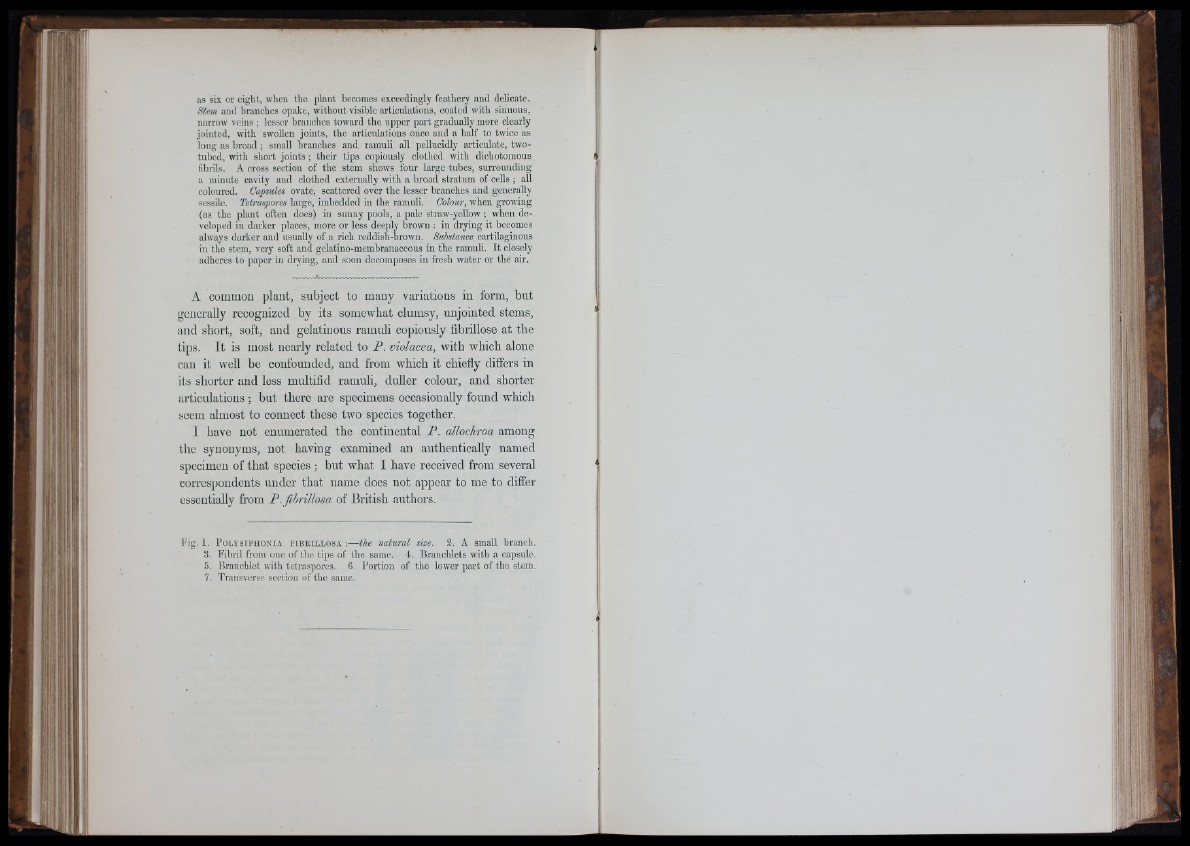
as six or eight, when the plant becomes exceedingly feathery and delicate.
Stem and branches opake, without visible articulations, coated with sinuous,
narrow veins ; lesser branches toward the upper part gradually more clearly
jointed, with swollen joints, the articulations once and a half to twice as
long as broad ; small branches and ramuli all pellucidly articulate, two-
tubed, with short joints ; their tips copiously clothed with dichotomous
fibrüs. A cross section of the stem shows four large tubes, surrounding
a minute cavity and clothed externally with a broad stratum of cells ; aU
coloured. Capsules ovate, scattered over the lesser branches and generaUy
sessile. Tetraspores large, imbedded in the ramuli. Colour, when growing
(as the plant often does) in sunny pools, a pale straw-yellow ; when developed
in darker places, more or less deeply brown ; in drying it becomes
always darker and usuaUy of a rich reddish-brown. Substance cartilaginous
in the stem, very soft and gelatiuo-mcmbranaceous in the ramrdi. I t closely
adheres to paper in drying, and soon decomposes in fresh water or the air.
1 I A common plant, subject to many variations in form, but
generally recognized by its somewliat clumsy, unjointed stems,
and short, soft, and gelatinous ramuli copiously fibrillose at the
tips. It is most nearly related to P. violacea, with which alone
can it well be confounded, and from which it chiefly differs in
its shorter and less multifld ramuli, duller colour, and shorter
articulations ; but there are specimens occasionally found which
seem almost to connect these two species together.
I have not enumerated the continental P. allochroa among
the synonyms, not having examined an authentically named
specimen of that species ; but what I have received from several
correspondents under that name does not appear to me to differ
essentially from P. fibrillosa of British authors.
Fig. 1. P o l y s ip h o n ia p ib e i l l o s a :— the natural size, 3. A small branch.
3. Fibril from one of the tips of the same. 4. Branchlets with a capsule,
5. Brancblct with tetraspores. 6. Portion of the lower part of the stem.
7. Transverse section of the same.